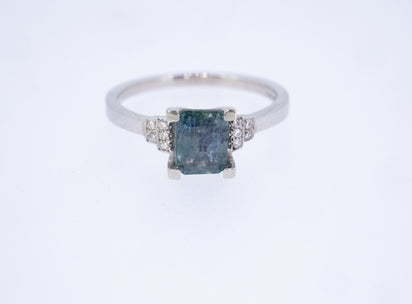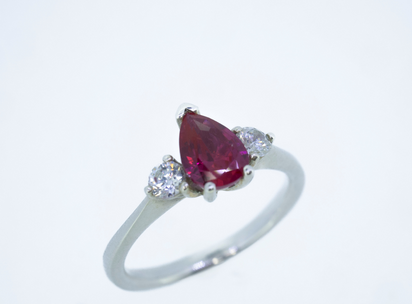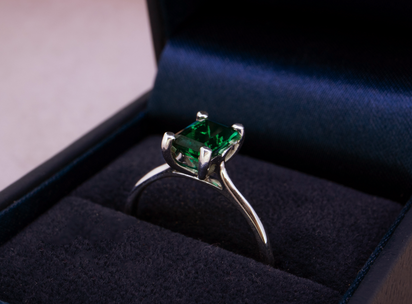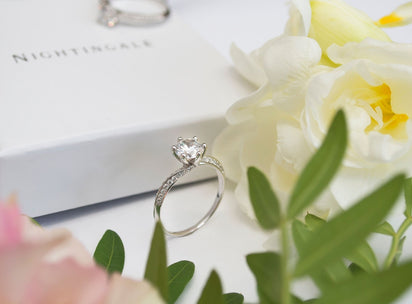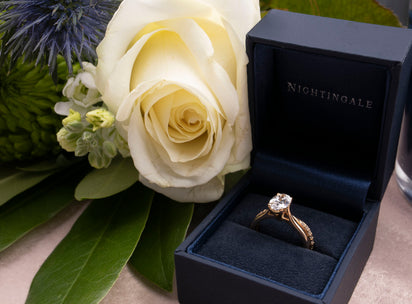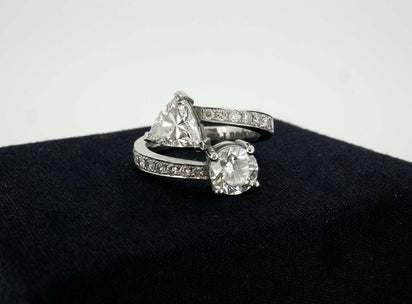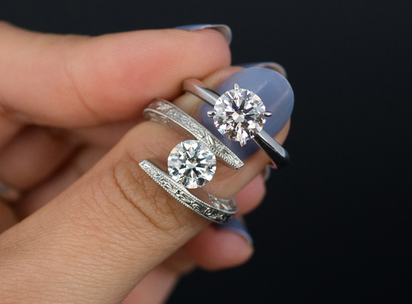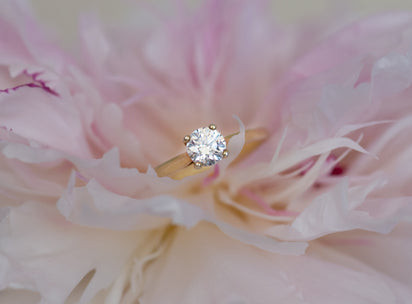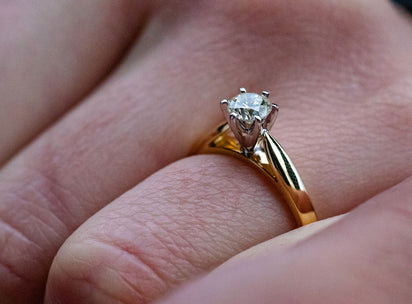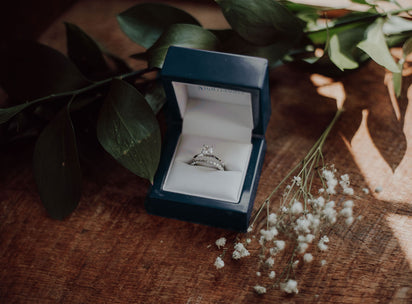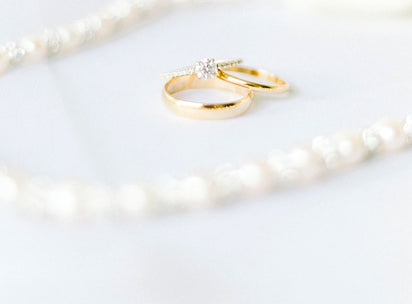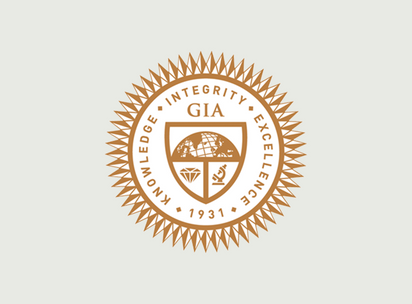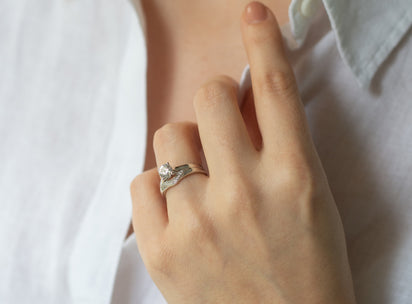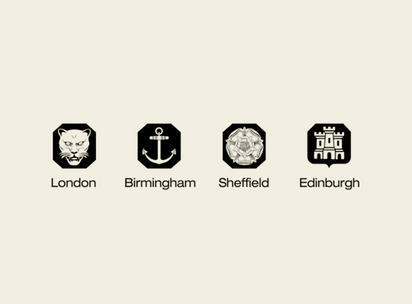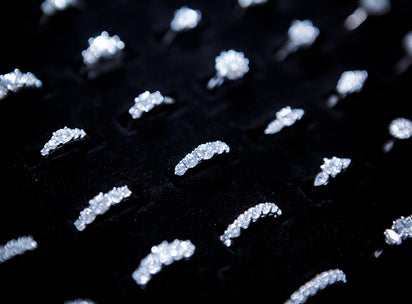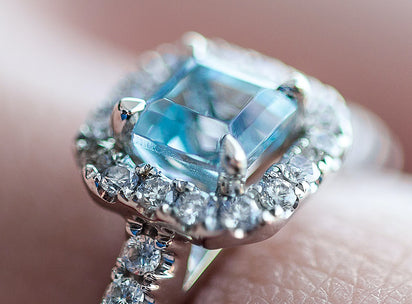What is Moissanite?
Moissanites are a type of mineral in the same way that a diamond (or any type of gemstone) is. Outside of it's use in jewellery it's found in many industrial processes under the more common name of silicon carbide or carborundum.
You might be surprised, but naturally occurring moissanite is one of the rarest minerals on earth, in contrast to diamonds which are one of the more common. The discovery of this mineral is truly other wordly, with it's first recorded occurrence being found in the crater of a crashed meteorite.
The French chemist Henri Moissan mistakenly thought the minerals he had discovered in 1893 were diamonds, but 9 years later realised that they were in fact an entirely new material, silicon carbide.
Around the same time, American inventor Edward G. Acheson had stumbled on a way to synthesise silicon carbide. Originally attempting to grow diamonds, his manufacturing process (more about that below) led to the discovery of small green crystals which had comparable hardness to diamonds. He began selling the material (which he named Carborundum) as a means to polish gems.
In modern times, the original patent filed by Archeson has long since expired, meaning the material is manufactured all around the world for both cosmetic and industrial purposes.
Moissanite v diamonds
Moissanites and diamonds share many similar qualities, but they are in fact two completely different materials with some small, but very noticeable differences.
Durability
Minerals are measured on a hardness scale, which is measured in Ohms. Diamonds are the hardest minerals known to man, so naturally they set the upper end of the scale with a score of 10. Moissanites are also very hard, measuring at 9.25 ohms. For a reference point, rubies have a score of 9 ohms.
Cost
Diamond prices can vary depending on the 4 Cs (Cut, Carat, Colour and Clarity). Moissanite prices are typically only influenced by the carat of the stone. They are universally cheaper than diamonds when comparing similar carat sizes.
Sourcing
Naturally occurring moissanite is one of the rarest minerals on earth, with only a handful of deposits being found throughout history. The knowledge to synthesise moissanite was uncovered over 100 years ago and as such, all moissanite sold today has synthetic origins.
Similar to lab diamonds, this means the impact of large scale mining operations both on the environment and workers is non-existent. Millions of tons of earth don't have to be moved to uncover moissanites, and they don't end up as currency in human conflict. Both of which are major issues in the diamond industry.
This means moissanites are a much more ethical choice compared to mined diamonds, but are comparable to lab grown diamonds.
Comparing the 4 Cs
All diamonds are graded using the 4 Cs. They are carat, cut, clarity and colour. These 4 qualities combined give an indication of overall quality and cost of a diamond. As moissanites are very similar to diamonds, we can apply the 4 Cs to them too and compare the major differences.
Colour
A quality diamond has no trace of colour and will always display a dazzling white appearance. Moissanite on the other hand can shine with a yellow or grey tinge in certain lights. The bigger the stone, the more noticeable this will be, meaning you will never be able to get the same colour quality in a moissanite that you get in a diamond.
Clarity
Moissanites refract light to a higher degree than diamonds, which on paper sounds like a good thing. But under certain lighting conditions, it can be a bit too much, giving an undesirable effect to some people. Diamonds shine to a different degree than moissanites. They refract, reflect and have a distinct surface sparkle which gives diamonds their unique and brilliant shine.
Cut
Diamonds and moissanites can be cut into more or less the same shapes as each other, however due to moissanites inherent chemical composition, the same cuts in different materials can react to light differently.
Carat
Diamonds and moissanites can come in the same carat weights, however the larger you go with moissanites their imperfections compared to diamonds can become more noticeable. Larger moissanites will have a more noticeable grey or yellow tint and the differences in reflections will be more pronounced.
Moissanites v lab diamonds
Many comparisons are made between moissanite and lab grown diamonds, due to their shared origins in labs, as opposed to being found naturally occurring in nature. However, this comparison is flawed in many ways.
Moissanites and diamonds are two completely different materials, with their own distinct chemical make up. Lab diamonds are structurally and chemically identical to mined diamonds, with only their origin differing.
Lab diamonds combine the superior quality of diamonds with the much lower environmental impact of moissanite. Meaning with lab diamonds you get a superior gemstone for your jewellery, with the same ethical origins as moissanite. That's why lab diamond engagement rings are our preferred choice of gemstones for all our rings.
What should you use in your ring?
The choice between moissanite and diamonds for most people comes down to price. Moissanites are a fraction of the price, but don't give you the same shine as diamonds do. For a lot of people, that's fine, but if your heart is set on a diamond then moissanites simply aren't a good alternative in our opinion as they don't have the same colour quality or shine.
A good alternative is a lab grown diamond which is absolutely identical to a mined diamond, but have much more ethical origins and a lower cost.
